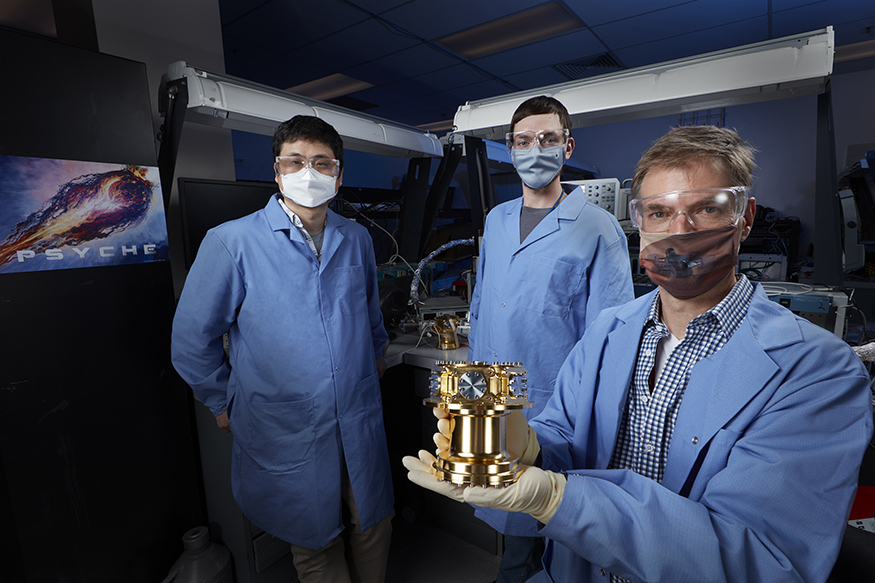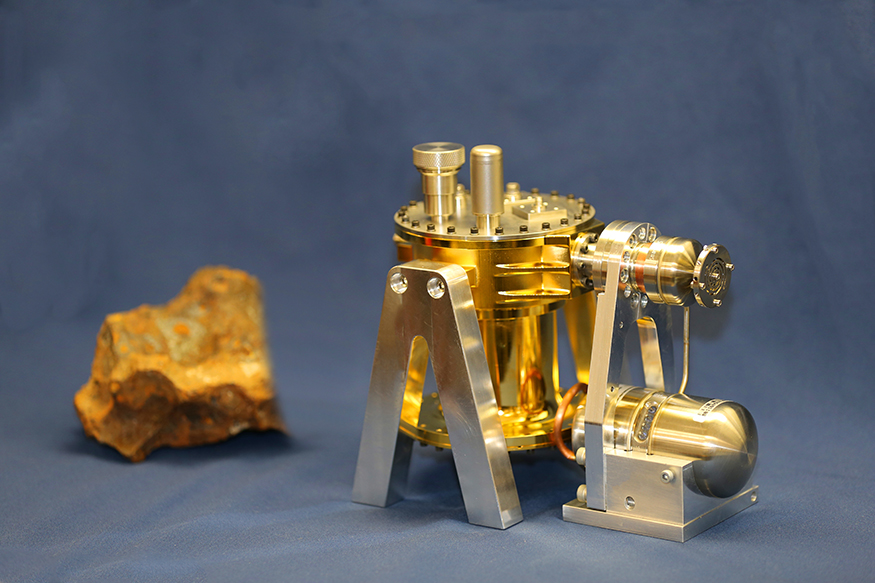Gamma-ray spectrometers
Lawrence Livermore researchers are adapting gamma-ray technology to answer questions about the composition and evolution of planets, moons, and asteroids.
Determining chemical makeup of space surfaces
Gamma radiation—emitted from stars, nuclear materials, and radiological materials—is useful for identifying unknown radioactive sources and determining their elemental and isotopic composition. Gamma rays are often the most useful radioactive emission to measure because they provide a unique fingerprint of a material’s elemental composition.
Gamma-ray spectrometers provide the means to identify and quantify a material’s isotopes. Gamma-ray spectroscopy has proven to be a successful tool in many fields, such as in solar physics to learn more about the Sun, in astrophysics to determine the composition of galactic and extragalactic objects, and in nuclear physics to discover the basic structure of matter. In planetary science, researchers use gamma-ray spectroscopy to determine the elemental makeup of the surfaces of planets, moons, and asteroids. This information provides further understanding into how these objects formed and changed over time.
We are leveraging germanium-based, gamma-ray spectroscopy technology developed for terrestrial and national security applications to build detectors for upcoming space missions. When adapted for space environments, these portable, lightweight, extremely sensitive gamma-ray detection technologies gather data to potentially solve some of the biggest mysteries about the formation of planets in our universe.
Focusing on features for space exploration
Our newest gamma-ray detector—called GeMini-Plus—is an improved, simplified, and more rugged version of the original GeMini gamma-ray spectrometer. It uses a germanium detector (the “Ge” in GeMini) to identify and analyze gamma rays. Germanium offers the high resolution necessary for accurately determining the surface composition of a planet or an asteroid.
In the past, this resolution came at a cost because the germanium must be cooled to extremely low temperatures (around -200°C) using liquid nitrogen—a substance that’s impractical to use outside a laboratory environment. To overcome this challenge, we combined an innovative ultraminiature cooling system (the “Mini” in GeMini) with an infrared shielding mechanism. This mechanically cooled system does not require liquid nitrogen and is both fieldable and highly effective.
Our detector’s other features—low power consumption, automated operation, and small size—make it a good fit for space exploration. By modifying the device for the specifications of each mission, we can obtain the necessary high-resolution data with a low-mass, low-power device.
Going into space
Under the leadership of researchers at Johns Hopkins University Applied Physics Laboratory, we are preparing GeMini-Plus technology for:
- The Psyche mission, which will explore a “world made of metal” rather than ice or rock. GeMini-Plus is one of several key instruments that together will help determine the asteroid’s elemental makeup as well as its gravitational field, magnetic field, and geological features.
- The NASA-funded MEGANE instrument, which will fly on the Japan Aerospace eXploration Agency (JAXA) missions known as the Martian Moons Exploration (MMX). The instrument will measure the elemental composition of Mars’ moon Phobos and potentially provide clues to the moon’s mysterious origin.
- The Dragonfly mission to Saturn’s moon Titan. The gamma-ray detector—modified to use the cold temperature of the planet for passive cooling rather than the cryocooler—will measure the elemental composition of Titan’s surface.
Supporting national security missions
The technologies we are developing have a wide range of applications on Earth and in space. For gamma-ray spectrometers, there has long been a synergy between applications for outer space exploration and for homeland security. Our family of gamma-ray instruments—some of which are now commercialized—are used by U.S. Homeland Security and the international nuclear nonproliferation communities for detecting clandestine nuclear materials.
Image gallery
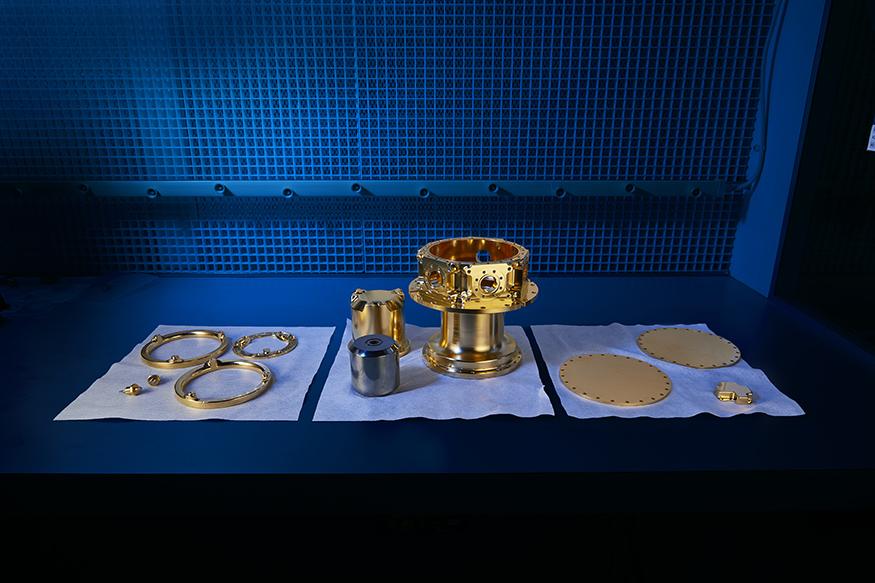

Parts for the Psyche gamma-ray spectrometer.
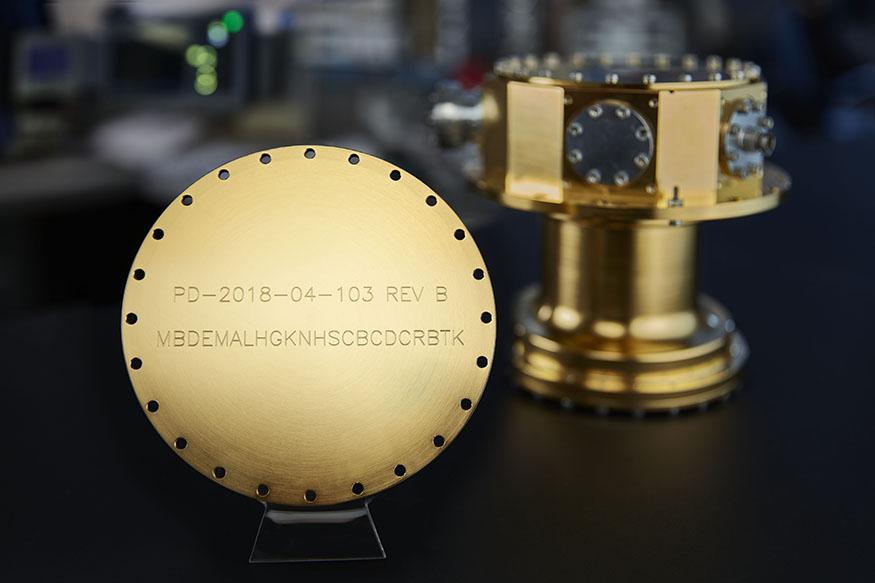

The Psyche gamma-ray spectrometer flight unit lid with its special part number next to the fully built engineering test unit. The part number contains the initials of the engineers, scientists, and technicians who worked closely on the design.
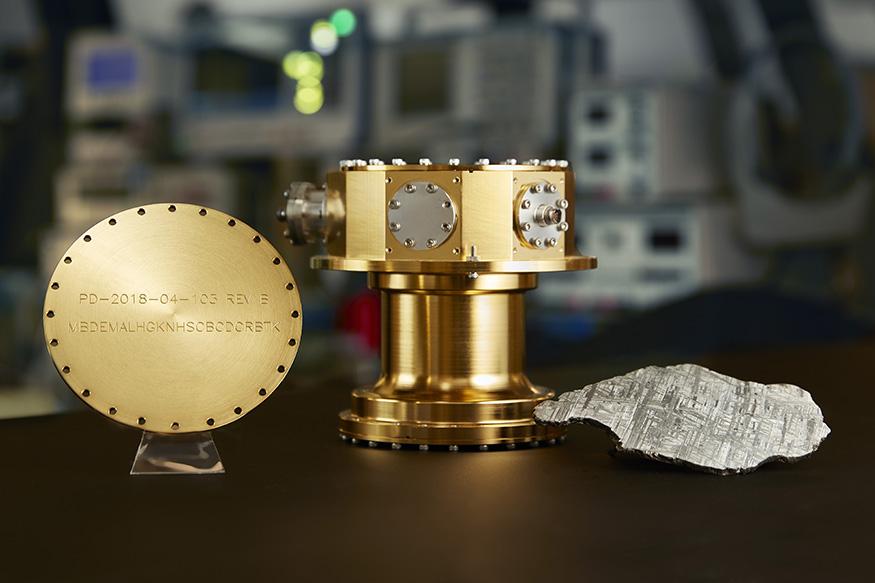

The Psyche gamma-ray spectrometer flight unit lid and engineering test unit next to a slice of Muonionalusta, an iron IVA meteorite with an elemental composition relatively similar to something we might find on Psyche.
People
| Name | Title | Discipline |
|---|---|---|
| Team | ||
Collaborators
David Lawrence, Johns Hopkins Applied Physics Laboratory
Select publications
GeMini: A High-Resolution, Low-Resource, Gamma-Ray Spectrometer for Planetary Science Applications | Space Science Reviews, 2020
M.T. Burks, O.B. Drury, J.O. Goldsten, L.B. Hagler, L.E. Heffern, N.R. Hines, G.-B. Kim, D.J. Lawrence, K.E. Nelson, P.N. Peplowski, Z.W. Yokley

